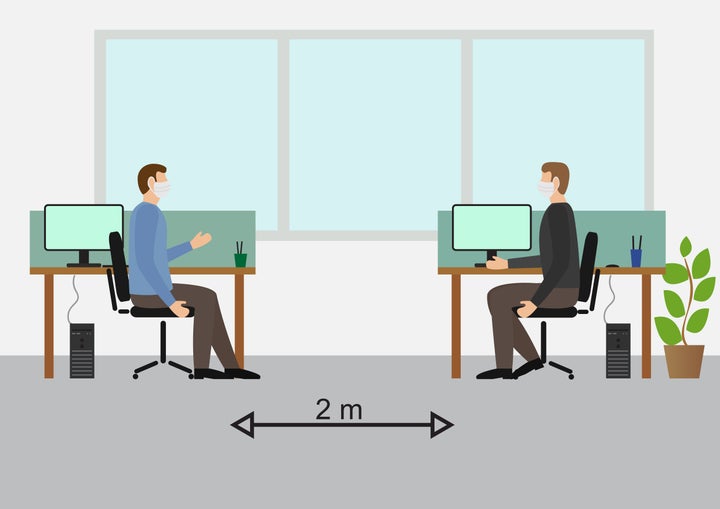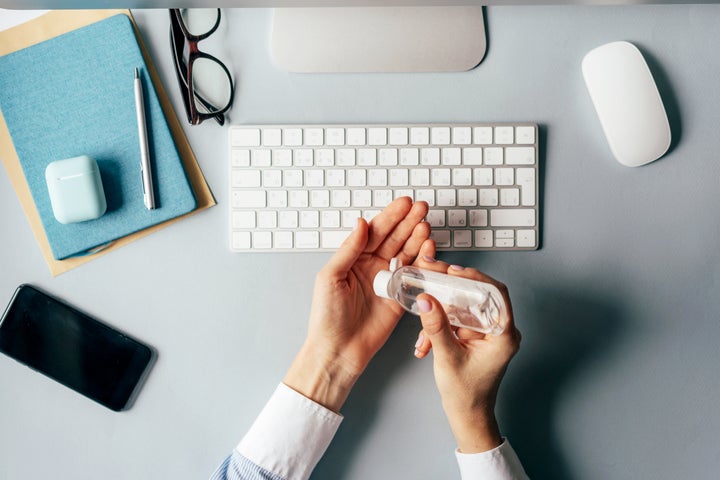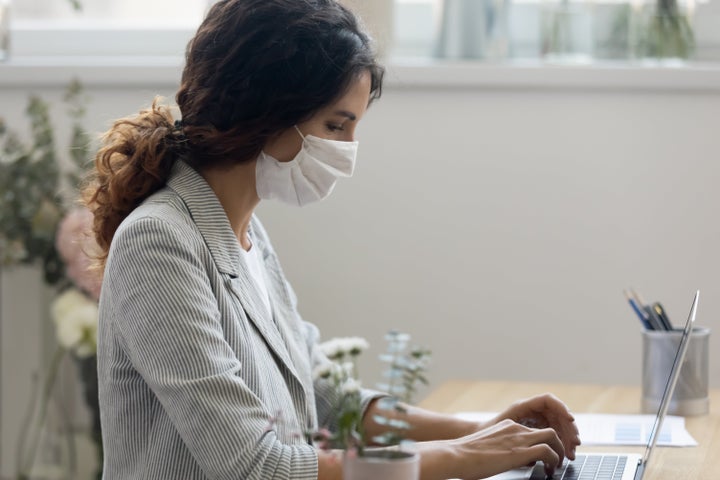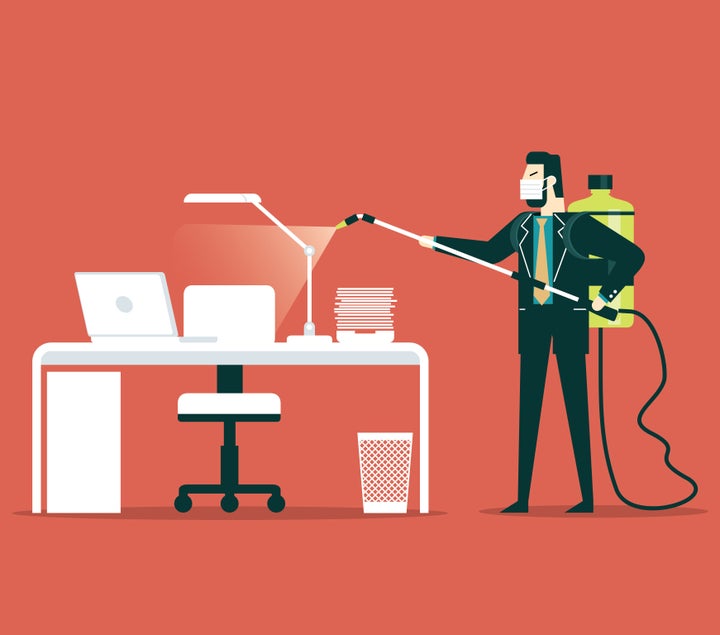
As Australia begins to emerge from lockdown, with children returning to school and post-pandemic plans for public transport in major Aussie cities being announced, there are still an estimated one million office workers working from home. The recent ease in restrictions means many will be starting to wonder when they might be expected to start appearing in the office again.
If you’re feeling uneasy about returning to your ‘normal’ work situation while there are still cases of coronavirus within the community, you’re not alone. Around 78% of office workers want the option to work from home, according to McCrindle research.
A separate poll shows 80% of people are concerned about getting on public transport, and some people want to keep working from home simply because, “these changes have created a realisation that they can do their jobs with no commute (or commuting costs), no dress code, and the ability to pop a load of washing on while the kettle boils for morning tea,” said Special Counsel in the Employment Law Group at McCabe Curwood, Erin Kidd. “For this reason they may want to delay their return to the workplace for as long as possible, or not want to return to the workplace at all.”

Here’s what you need to know about returning to the office – or not:
Is it normal to feel anxious about returning to the office?
In a nutshell, yes. “We have been through a social trauma,” psychologist specialising in stress and trauma, Dr Scott Lyons told HuffPost Australia. “Anxiety and stress are often a response to a transition or time of uncertainty. Going back to the office, which used to be something familiar, is now unfamiliar because so much has changed. That can feel very difficult.”
How do I deal with this anxiety?
“Some people might have specific concerns about public transport, physical distancing between colleagues or juggling work and home commitments again,” said Dr Lyons. “Others might just feel a general sense of threat about the new situation. If this is the case for you, recognise the feeling, be open with your manager and ask for support. If your anxiety is more specific, try and find a way to control the situation. For example, could you walk to work instead of getting public transport, or catch the bus at a quieter time?”
Is it safe to take public transport?
Nobody can be certain. In order to maintain social distancing rules, 85% of people using public transport in Melbourne will have to find another mode of transport, according to cycling advocacy group, We Ride Australia. In NSW, there are limits of 12 people on buses, 32 passengers on each train carriage and 45 commuters on ferries.
Premier Gladys Berejiklian has admitted that if she had to rely on public transport, she would “be choosing to walk. I would look at different options to potentially avoid a crowded platform,” she told a press conference last week, after advising against using public transport in peak times.
How can I ask for a staggered approach to head back to my desk?
Most companies should be automatically offering a staggered return, said Associate Dean of Research at UNSW Business School, Professor Frederik Anseel. “There are clear guidelines around how to best organise a “back to work” strategy, including a staggered approach,” he said. “Most companies will be extremely cautious in following health directives from governments and taking safety measures.”
If that isn’t the case for you, it’s best to raise it directly with your manager, advises Anseel. “These are unseen times, and there will be an unusual openness to discuss these concerns and find ways to deal with them,” he predicts. “It’s much better to immediately get it in the open rather than starting to gossip and complain with colleagues. Rumours and misinformation spread quickly and there’s a risk that people are creating anxiety without it being necessary.”

What should I do if my colleagues aren’t social distancing?
“Not everyone’s post-quarantine behaviour will be the same, which will inevitably cause some stresses in transitioning to a scenario everyone feels comfortable with,” said Dr Lyons. Be aware that others might not behave in the same way as you, and to try to be open and honest about how you’re feeling. “It can be easy to dehumanise people and see them as a threat in this sort of scenario,” said Dr Lyons. “Look at each other, smile, and be open.”
Will everyone just be expected to go ‘back to normal’?
Many companies are taking the opportunity to re-think how their staff work. Twitter have said their staff can work from home forever if they choose to and Facebook announced last week they expect 50% of their workforce to work from home in the next five to 10 years.
“We don’t need to go back to ’how things were before the pandemic,” said Professor Anseel. “This health crisis has shown how incredibly flexible both employees and companies can be under suddenly changing circumstances, so this is the moment to benefit from what we’ve learned. Now is the time to establish a new normal, where people can flexibly arrange with their employers working from home and going to the workplace.”
While Jacinda Ardern has been praised by flexible work advocates for encouraging New Zealanders to work a four-day week, Anseel believes employers need to think more broadly.
“Instead of imposing a uniform four-day work week, it would be better to pursue flexible working arrangements, customising work arrangements to individual needs, taking into account also the needs of the company,” he said. “Our research shows that this type of personalisation - when done well - leads to increase in firm performance over time, because people feel more fairly treated and supported, and reciprocate by putting in more effort and going the extra mile.”

How can I broach more flexible work with my employer?
“It’s best to frame requests in terms of work-life integration,” said senior lecturer in management at Swinburne University of Technology, Dr Melissa Wheeler. “Instead of asking for an arrangement that will be best for you and your family, reframe the request to explain how a flexible work arrangement will positively impact your work, health, wellbeing, mood, and thus your productivity and commitment to your organisation. Provide examples of how you were more productive and can continue to be if you’re allowed to retain more working from home days.”
It’s also a good idea to show you can lead the way in this approach to flexible work, said Professor Anseel. “At first, old-fashioned companies can be a bit in the dark how to organise blended working as it requires more creativity and organising. You’ll need to find common time slots that the entire team is at work for collaboration, meetings and networking. Show that as an employee you can take the lead in this, and organise your teams to show it can be done.”
What are my rights as a worker?
Safety at work: There are 10 national COVID-19 Safe Workplace Principles issued by the government. These dictate that “businesses, workers must…ensure their workplaces are ready for the social distancing and exemplary hygiene measures that will be an important part of the transition.” Many companies are implementing strategies such as floor markings to encourage physical distancing, increased screens, extra workplace cleaning, and measures to limit customer interaction and work-related travel.
However, a recent poll by the Australian Council of Trade Unions showed that just one in 10 workplaces has increased basic hygiene measures such as buying hand sanitiser and 90% of workers said there was no plan in place in case they or a colleague got coronavirus.
Flexible work: The onus is on employers to refuse your flexible work requests. “The employer needs a legitimate business reason to refuse the request,’ explained Kidd. “And, following the work-from-home measures that some employers have put in place for COVID-19 many of the usual operational reasons for refusing a working-from-home request may no longer be available.”